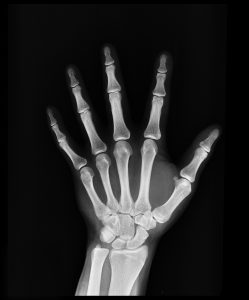Table of Contents
What is Nuclear Medicine?
What is Nuclear Medicine?

Nuclear medicine is a technique that uses a small amount of radioactive material to create pictures of the inside of the body or to provide treatments and therapy. Images can help doctors see how organs and tissues are functioning, which can be really useful in diagnosing and treating various health conditions. It’s a bit like getting a sneak peek inside your body without any surgery!
Specific uses of nuclear medicine include:
– Finding disease in its earliest stages
– Targeted treatment to specific cells
– Monitoring the bodies response to treatment
How did we start using Nuclear Medicine?
-
The field of nuclear medicine started to take shape in the mid-20th century with the development of the gamma camera by Hal Anger in the 1950s. The gamma camera is a crucial imaging device used in nuclear medicine to detect gamma rays emitted by radioactive substances inside the body.
-
This provided a non-invasive way to visualize the internal functioning of organs and tissues. The gamma camera allowed physicians to obtain detailed images based on the distribution of radioactive tracers, enabling them to observe the processes within the body.
-
The use of radioactive iodine for thyroid imaging and treatment was one of the first uses of nuclear medicine. Gradually, technological progress and the identification of diverse radiopharmaceuticals broadened the purview of nuclear medicine, rendering it a valuable tool for the identification and management of an extensive array of medical conditions.
- Nuclear medicine's capabilities were significantly improved in the 1970s with the introduction of positron emission tomography (PET), which produced far more intricate images and useful data about the body's interior workings.
Examples of Nuclear Medicine
Diagnostic Imaging
Diagnostic imaging refers to a variety of methods for looking inside the body to confirm a diagnosis and determine the source of an illness or damage. It is also used by medical professionals to assess how well a patient’s body reacts to therapy for a sickness or fracture.
Most people will have some form of medical imaging in their lifetime. Common examples are:
X-Ray
Medical imaging began using X-rays almost immediately after they were discovered. Radiation is produced by an X-ray machine and travels through your body to produce an image. The X-rays are absorbed by your body in different ways by different areas. Soft tissue and lungs appear darker on X-ray images because they absorb less radiation than teeth and bones. In the pictures, teeth and bones appear whiter.
CT Scans
3D images of your body are created by CT scans. Images representing a wide range of illnesses and injuries are utilized for diagnosis, treatment planning, and monitoring. In order to inject dye that appears during a CT scan, you may need to have a tiny tube inserted into your arm. Before your scan, you could be asked to consume water or a drink that contains color and water. These are going to make various body components easier to see.
PET-CT or PET-MRI
PET (positron emission tomography) is a kind of nuclear medicine scan that can also provide 3D images. A tiny quantity of a radioactive material is infused into a vein. Numerous illnesses and ailments can be identified and tracked with the use of PET imaging. Normally, within a day, your body’s radioactivity becomes unnoticeable.
Therapeutic Applications
For therapy, radioactive materials are used to kill cancerous tissue, shrink a tumor or reduce pain.
Some common types of radionuclide therapy are:
- Treatment of over-active thyroid
- Treatment of thyroid
- Treatment of blood disorders
- Chronic inflammatory rheumatism
Benefits
Benefits
Risks
Risks
Safety and Quality
Nuclear medicine is tightly regulated to ensure the safety of patients, healthcare professionals and the environment. Strict guidelines govern:
- Radiation dosage: Limiting exposure to the minimum necessary for effective treatment.
- Equipment standards: Ensuring medical facilities adhere to high-quality standards.
Explore Further
Choose from the articles below to continue learning about nuclear.
The Nuclear Fuel Cycle Explained: An Open and Closed Case?
Boiling Water Reactor (BWR) – an introduction to this type of nuclear power plant
RBMK Reactors – Downfall of the Soviet Union
Neutron Moderators – The secret to sustaining chain reactions
Did you know? Explore Nuclear also offers great careers information and learning resources.
Below you can find references to the information and images used on this page.
Content References
Image References
- X-ray of a normal hip – CC0 1.0
All other images downloaded from Pexels (free stock images)
